Learn a Misconception of the Heisenberg Uncertainty Principle
One of the common misconceptions about the Heisenberg Uncertainty Principle (HUP) is that it is the fault of our measurement accuracy.
A description that is often used is the fact that to observe the position of an electron, for example, one needs a probe, such as a photon, with a very short wavelength to get any reliable accuracy. But a very short wavelength photon has very high energy, and thus, the act of position measurement will simply destroy the accurate information of that electron’s momentum. Hence, this is an example of the HUP. While this is true, it isn’t a manifestation of the HUP. The HUP isn’t about a single measurement and what can be obtained out of that single measurement. It is about how well we can predict subsequent measurements given identical conditions. In classical mechanics, if you are given a set of identical conditions, the dynamics of a particle will be well defined. The more you know the initial position, the better you will be able to predict its momentum, and vice versa. The most direct way to illustrate this is using a single-slit measurement. Let’s first consider the classical case so that we know what we normally expect to happen. I suggest you sketch the setup along (since I’m unable to show sketches on here, but will try to make an effort to clearly explain the orientation of things). Let’s say you have a source of classical particle that emits this particle one at a time on demand and emits it with a constant velocity and kinetic energy. At some distance from this source is a single slit. For clarity’s sake let’s say the slit is aligned along the x-direction so that the width of the slit is along the y-direction. The orientation of the x and y coordinate axes is in such a way that (using the right-handed coordinate system) the z-axis is along the direction of propagation of the particles. So the direction of the z-axis is from the source to the slit, and beyond. Beyond the slit is a screen of detectors (could be a photographic plate, a CCD, etc.) This detector records where the particle hits after it passes through the slit. Let’s say this screen is a distance L after the slit.
Now, let’s get some basics out of the way:
1. If a particle gets through the slit, then I can say that my knowledge of the position of the particle at the slit has an uncertainty equal to the width of the slit. Thus, the width of the slit Delta(y) is the uncertainty in the position of the particle when it passes through the slit.
2. The y-component of the momentum of the particle can be found by looking at how far the particle drifts along the y-direction when it hits the screen. This makes the explicit assumption that no external forces act on the particle at and after it passes through the slit so that its momentum remains constant from the slit to the screen (which is a reasonable assumption). Let’s say the particle drifts from the center, straight-through line and hits the screen at a distance Y. If it takes the particle a time T to reach the screen (which we can assume to be a constant if screen distance from the slit is much larger than the width of the slit (i.e. L >> Delta(y)), then the y-component of the momentum is p_y prop. Y/T. Now, there is a measurement uncertainty here in determining where exactly the particle hits the detector. This measurement uncertainty depends on the resolution of the detector, how fine is the “mesh”, etc. But this is NOT the “uncertainty” that is meant in the HUP. We haven’t gotten to the uncertainty of the momentum YET. All we have is a measurement of the y-component of the momentum of the particle.
Now, let’s experiment with the classical particles. You shoot the particles one at a time and record where they hit on the screen. Ideally, what you will end up on the screen is only one spot where the particles that pass through the slit hit. However, closer to reality is that you end up with a Gaussian distribution at the slit, where the peak lies directly along the straight-through direction that has zero y-component of momentum. The uncertainty in the momentum then corresponds to the width of the Gaussian distribution (full width at half maximum). Now, THIS is Delta(p_x) as referred to in the HUP!
Let’s make the width of the slit smaller. This means Delta(y) is smaller. You are now letting a smaller possible angle of incidence of the particle from the source get through the slit. This means that there will be a smaller spread that is detected on the screen. The Gaussian distribution will be thinner. So classically, what we expect is that as Delta(y) gets smaller, Delta(p_y) also correspondingly becomes smaller.
This is what we expect in classical mechanics. If all the initial conditions remain identical (I have the same source), then the more I know where the object is at any given instant, the more I can predict its subsequent properties. I can say what its y-momentum will be with increasing accuracy as I increase my certainty of its position by decreasing the width of the slit. I can easily predict where the next particle is going to hit since I will know what its momentum is going to be after it passes through a very narrow slit. My ability to predict such things increases with decreasing slit width.
Fine, but what happens with a quantum particle such as a photon, electron, neutron, etc.?
We need to consider two different cases. If the slit width is considerably larger than the de Broglie wavelength (or in the case of a photon, its wavelength) of the particle, then what you have is simply the image of the slit itself. The ideal situation would give you simply a “square” or Gaussian distribution on the screen of the intensity of particles hitting the detector. This is no different than the classical case.
It gets interesting as you decrease the slit. By the time the width of the slit is comparable to the de Broglie wavelength, something strange happens. On the screen, the spread of the particles being detected starts expanding! In fact, the smaller you make the slit width, the larger the range of values for Y that you detect. The “Gaussian spread” now is becoming fatter and fatter. This is the single-slit diffraction pattern that everyone is familiar with.
Now, THIS is the uncertainty principle at work. The slit width, and thus Delta(y) is getting smaller. This implies that Delta(p_y) is getting larger. Take note that the measurement uncertainty in a single is still the same as in the classical case. If I shoot the particle one at a time, I still see a distinct, accurate “dot” on the screen to tell me that this is where the particle hits the detector. However, unlike the classical case, my ability to predict where the NEXT one is going to hit becomes worse as I make the slit smaller. As the slit and Delta(y) become smaller and smaller, I know less and less where the particle is going to hit the screen. Thus, my knowledge of its y-component of the momentum correspondingly becomes more uncertain.
What I am trying to get across is that the HUP isn’t about the knowledge of the conjugate observables of a single particle in a single measurement. I have shown that there’s nothing to prevent anyone from knowing both the position and momentum of a particle in a single measurement with arbitrary accuracy that is limited only by our technology. However, physics involves the ability to make a dynamic model that allows us to predict when and where things are going to occur in the future. While classical mechanics does not prohibit us from making as accurate of a prediction as we want, QM does! It is this predictive ability that is contained in the HUP. It is an intrinsic part of the QM formulation and not just simply a “measurement” uncertainty, as often misunderstood by many.
I’ve recently come across a video that has a very clear illustration of what I wrote above.
Hopefully, that will make it clearer. Note that at the end, the presenter made a weak “caveat” to this, where he presented arguments that if the light is purely a wave, this is not a clear demonstration of the HUP. I can counter that.
If we go by the old, classical, pre-1900 idea that light is a wave, then we can also use the old classical notion that electrons are purely particles (remember, no wave-particle duality here). Then one can easily repeat such an experiment with electrons AND get the SAME type of results. Electron diffractions are so common, it is no longer funny.
So one can easily argue that this single-slit demo is definitely a very clear demonstration of the HUP, and, hopefully, kills off this very common misconception of what it is.
PhD Physics
Accelerator physics, photocathodes, field-enhancement. tunneling spectroscopy, superconductivity

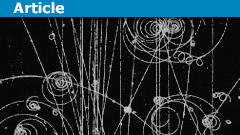

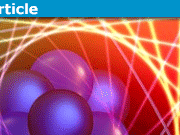

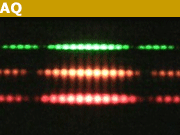
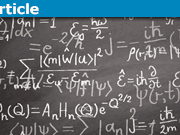
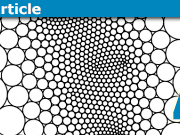
Sorry for reviving an old(ish) thread but I just had a thought while reading a new paper.
One interesting way of thinking about this in the context of qubit error correction. A direct consequence of the HUP is that any measurement of a bit-flip error will produce a random flip in phase, making it impossible to directly stabilize a single qubit. This is a direct consequence of the fact that it is impossible to simultaneously measure both the phase and amplitude of a qubit.
Hence, this is nice practical (as opposed to philosophical) example of when the HUP limits our ability to measure something single-shot (i.e. in a “non-statistical” way),
Btw, the paper I was reading was Martinis new qubit metrology paper/comment (not sure if he intends to publish this)
[URL]http://arxiv.org/abs/1510.01406[/URL]
“Does it mean that in this case and similar cases, we can interpret QM the same way we interpret statistical mechanics?”
In all cases in which Bohmian mechanics works, QM can be like statistical mechanics.
In the special cases where the Wigner function is positive, and the quantum Liouville equation is identical to the classical one, we can additionally say that the particle has simultaneously-defined position and momentum. (I think, not entirely sure, I think there are some tricky points about Wigner functions and Bell inequality violations)
Edit: some references about Wigner functions and Bell inequality violations
[SIZE=4]
[URL]http://arxiv.org/abs/quant-ph/0405100v1[/URL]
Bell’s Inequality Violation (BIQV) with Non-Negative Wigner Function
M. Revzen, P. A. Mello, A. Mann, L. M. Johansen
[URL]http://arxiv.org/abs/1409.0437[/URL]
Violations of entropic Bell inequalities with coarse-grained quadrature measurements for continuous-variable states
Zeng-Bing Chen, Yao Fu, Yu-Kang Zhao[/SIZE]
“For example, for the case of a free Gaussian wave packet (it could be more general than this) the Wigner quasidistribution is not negative, and so can be considered a distribution. Furthermore, the quantum Liouville evolution for a free Gaussian is the same as the classical Liuoville evolution. I might be remembering some conditions wrongly here, look up [URL]http://dspace.mit.edu/bitstream/handle/1721.1/49800/50586846-MIT.pdf?sequence=2[/URL] (Eq 4.10 and following).”
Does it mean that in this case and similar cases, we can interpret QM the same way we interpret statistical mechanics?
“Can you explain it in terms of other formulations?
It seems to me that if you calculate the trajectories in dBB, its easy to see in what limit(s) they give you the Newtonian trajectories. Then I think we can translate those limit(s) to other formulations.”
Not off the top of my head, but these are all different formulations of the same thing, so it should be in principle possible.
“One way to see that ZapperZ’s explanation is wrong is to remember that if a particle in non-relativistic quantum mechanics has a trajectory, the trajectory is governed by de Broglie-Bohm like equations, and not Newtonian dynamics.”
Good point!
“For example, for the case of a free Gaussian wave packet (it could be more general than this) the Wigner quasidistribution is not negative, and so can be considered a distribution. Furthermore, the quantum Liouville evolution for a free Gaussian is the same as the classical Liuoville evolution. I might be remembering some conditions wrongly here, look up [URL]http://dspace.mit.edu/bitstream/handle/1721.1/49800/50586846-MIT.pdf?sequence=2[/URL] (Eq 4.10 and following).”
I’m trying to read that. But actually I don’t know enough about the phase space formulation of QM(Which goes back to not knowing enough about the corresponding classical equations, But I plan to change that). Can you explain it in terms of other formulations?
It seems to me that if you calculate the trajectories in dBB, its easy to see in what limit(s) they give you the Newtonian trajectories. Then I think we can translate those limit(s) to other formulations.
“Yeah, I understand. That’s how people measure things.
But this brings this question to my mind that how is it that all those quantum effects let you do that? How is it that you actually can assume the particle has a classical trajectory and still retain consistency with QM? Is it an approximation?
I mean…we’re really supposed to work with wave-functions and probability amplitudes here. So is it that those calculations give us classical results with good approximation?
So to state my question clearly. I know that experimentally its OK to do that. But how can you justify theoretically that you actually can do that?”
ZapperZ’s explanation is wrong. It is an approximation or uses assumptions that he has failed to state. Of course one must use the quantum mechanical formulation.
There are certain special cases under which the classical method of calculation is very good, or even exact.
For example, for the case of a free Gaussian wave packet (it could be more general than this) the Wigner quasidistribution is not negative, and so can be considered a distribution. Furthermore, the quantum Liouville evolution for a free Gaussian is the same as the classical Liuoville evolution. I might be remembering some conditions wrongly here, look up [URL]http://dspace.mit.edu/bitstream/handle/1721.1/49800/50586846-MIT.pdf?sequence=2[/URL] (Eq 4.10 and following).
Another special case is (I believe) the use of a position measurement (as ZapperZ has done) to perform a momentum measurement of the wave function just after the slit – this is correct in the special case in which the screen on which the position measurement is performed is an infinite distance from the slit. It is not correct at any finite distance. At large screen distance, it is a good approximation. Essentially, the momentum is the Fourier transform of position. The large screen limit is the Fraunhofer limit in which the time evolution takes the Fourier transform for you.
One way to see that ZapperZ’s explanation is wrong is to remember that if a particle in non-relativistic quantum mechanics has a trajectory, the trajectory is governed by de Broglie-Bohm like equations, and not Newtonian dynamics.
“Then you need to write a paper and tell all those people who do angle-resolved photoemission spectroscopy that their deduction of the particle energy and momentum in those electron analyzers are wrong. In case you don’t know, they consider the trajectory of the photoelectron from the entrance slit of the analyzer all the way to the CCD screen, through all those electronic optics, to be the same classical trajectory.
Zz.”
No. It means your justification of the calculation is wrong.
“Because there is no longer a superposition of path or superposition of trajectory after it passes through the slit. The “uncertain” quantity now is the momentum. ONCE the particle is detected, THEN, and not before that, can you reconstruct its trajectory from where it came from. This tells you the transverse momentum of that particle when it hits the detector.
We do this in all the detectors, big and small. How do you think high energy physics detectors able to do its path reconstruction after it detects the particle? All those “lines” you see drawn from ATLAS and CMS, do you think those were all there in the detector, or do you think they were reconstructed AFTER the fact?
Zz.”
Its clear now. Thanks a lot.
“Yeah, I understand. That’s how people measure things.
But this brings this question to my mind that how is it that all those quantum effects let you do that? How is it that you actually can assume the particle has a classical trajectory and still retain consistency with QM? Is it an approximation?
I mean…we’re really supposed to work with wave-functions and probability amplitudes here. So is it that those calculations give us classical results with good approximation?
So to state my question clearly. I know that experimentally its OK to do that. But how can you justify theoretically that you actually can do that?”
Because there is no longer a superposition of path or superposition of trajectory after it passes through the slit. The “uncertain” quantity now is the momentum. ONCE the particle is detected, THEN, and not before that, can you reconstruct its trajectory from where it came from. This tells you the transverse momentum of that particle when it hits the detector.
We do this in all the detectors, big and small. How do you think high energy physics detectors able to do its path reconstruction after it detects the particle? All those “lines” you see drawn from ATLAS and CMS, do you think those were all there in the detector, or do you think they were reconstructed AFTER the fact?
Zz.
“But reread your post. The problem here is that you seem to not be aware that what I described is exactly the approach that has been taken in deducing the momentum of electrons and many other particles, i.e. from the point of interaction to the point of detection, it has a classical trajectory!
You don’t have to believe this. All you need to do is look up mass or energy spectrometer when they measure the energy of particles such as electron, protons, etc. Do you think they used all these “infinite” possible paths?
Zz.”
Yeah, I understand. That’s how people measure things.
But this brings this question to my mind that how is it that all those quantum effects let you do that? How is it that you actually can assume the particle has a classical trajectory and still retain consistency with QM? Is it an approximation?
I mean…we’re really supposed to work with wave-functions and probability amplitudes here. So is it that those calculations give us classical results with good approximation?
So to state my question clearly. I know that experimentally its OK to do that. But how can you justify theoretically that you actually can do that?
“I’m not sure why you interpreted my post that way. But I’m not another physicist who is criticizing your approach in one of you papers, I’m a physics student asking about your approach as a professor teaching something!”
But reread your post. The problem here is that you seem to not be aware that what I described is [b]exactly[/b] the approach that has been taken in deducing the momentum of electrons and many other particles, i.e. from the point of interaction to the point of detection, it has a classical trajectory!
You don’t have to believe this. All you need to do is look up mass or energy spectrometer when they measure the energy of particles such as electron, protons, etc. Do you think they used all these “infinite” possible paths?
Zz.
“Then you need to write a paper and tell all those people who do angle-resolved photoemission spectroscopy that their deduction of the particle energy and momentum in those electron analyzers are wrong. In case you don’t know, they consider the trajectory of the photoelectron from the entrance slit of the analyzer all the way to the CCD screen, through all those electronic optics, to be the same classical trajectory.
Zz.”
I’m not sure why you interpreted my post that way. But I’m not another physicist who is criticizing your approach in one of your papers, I’m a physics student asking about your approach as a professor teaching something! I didn’t say you are wrong. I asked for clarification.
“[USER=6230]@ZapperZ[/USER]
Actually, this part seems too classical. You’re assuming that you can assign a definite momentum to the particle for its whole time of flight from the slit to the screen. Also you’re assuming that the motion of the particle is rectilinear. How can we talk about the particle’s path? How can we say its a straight line?
The extreme version of this question, can be asked by considering the Feynman’s thought experiment about infinite planes with infinite slits that leads to path integrals. How can you say that the particle’s path is this one among that infinite number of possible ones?”
Then you need to write a paper and tell all those people who do angle-resolved photoemission spectroscopy that their deduction of the particle energy and momentum in those electron analyzers are wrong. In case you don’t know, they consider the trajectory of the photoelectron from the entrance slit of the analyzer all the way to the CCD screen, through all those electronic optics, to be the same classical trajectory.
Zz.
[USER=6230]@ZapperZ[/USER]
“This makes the explicit assumption that no external forces acts on the particle at and after it passes through the slit, so that it’s momentum remains constant from the slit to the screen (which is a reasonable assumption).Let’s say the particle drifts from the center, straight-through line and hits the screen at a distance Y.”
Actually, this part seems too classical. You’re assuming that you can assign a definite momentum to the particle for its whole time of flight from the slit to the screen. Also you’re assuming that the motion of the particle is rectilinear. How can we talk about the particle’s path? How can we say its a straight line?
The extreme version of this question, can be asked by considering the Feynman’s thought experiment about infinite planes with infinite slits that leads to path integrals. How can you say that the particle’s path is this one among that infinite number of possible ones?
“Check this – [URL=’http://www.scientificamerican.com/article/heisenbergs-uncertainty-principle-is-not-dead/’]Experimenters violate Heisenberg’s original version of the famous maxim, but confirm a newer, clearer formulation.[/URL]
So, in actual experimental practice, have you all been employing Earle Kennard’s formulation for uncertainty all along?
“The one that physicists use in everyday research and call Heisenberg’s uncertainty principle is in fact Kennard’s formulation.””
In fact it is possible to define things so that even the informal Heisenberg principle has a formal form like the Kennard-Robertson form. [URL]http://arxiv.org/abs/1306.1565[/URL]
Check this – [URL=’http://www.scientificamerican.com/article/heisenbergs-uncertainty-principle-is-not-dead/’]Experimenters violate Heisenberg’s original version of the famous maxim, but confirm a newer, clearer formulation.[/URL]
So, in actual experimental practice, have you all been employing Earle Kennard’s formulation for uncertainty all along?
“The one that physicists use in everyday research and call Heisenberg’s uncertainty principle is in fact Kennard’s formulation.”
“Dear Zapped Z”
That’s “ZapperZ” not “Zapped Z”. He’s the one doing the zapping, not the one getting zapped.
I think HUP is best understood with the concept of phase space. You know, the space that represents the set that consists of all possible states of a physical system, and in which each point represents a state. HUP is basically talking about coordinates in classical phase space, in which a point is defined by location and speed. But quantum mechanics has a different state space, Hilbert Space. And the state of a physical system is actually quantum state. Thus, there is no such thing as uncertainly, the phase space defined in classical physics is simply wrong, period.
“Dear Zapped Z, i have read you article but i completely don’ t agree with it.
“I have shown that there’s nothing to prevent anyone from knowing both the position and momentum of a particle in a single measurement that is limited only by our technology. “: you are wrong.
As you know, the commutator between X and P is different from zero: the meaning is that you can’ t construct a base of common eigenfunctions to X and P, so you can’ t measure both x and p, with an arbitrary precision that depends only by our technology: the statement about the commutator is a fact of nature, and it is about a single measurement.
The Heisenberg principle, as you say in the article, is about more than one measurement, you are right, but you have forgotten that this “principle” is not a principle, but a mathematical consequence of the value of the commutator between two operators (you can demonstrate it.)
To sum up: the statement about a single measurement (commutator) implies a statement about more measurements (Heisenberg), but the last one is not a “principle” but only a consequence of the behaviour of a single measurement, described by the value of the commutator.”
ZapperZ and I have discussed this before. The way most people will understand his sentence, it is certainly wrong. However, apparently he did not mean what the sentence is most commonly understood to mean, so his intention is right.
“”Take note that the measurement uncertainty in a single is still the same as in the classical case”
What does this mean?”
It means that someone is good at physics and bad at English. :smile:
I think the author means, “..for a single photon..” The “dot” refers to where the wave function collapses and triggers the detector (photo film, photoelectric sensor array, or simply the spot on a screen where it reflects from and into your eye).
As long as the slit is much wider than the size of the photon the certainty of exactly where within that slit the photon passes through will be low; and as a result the momentum certainty (speed and energy are unchanging, so this really just means direction) will be high– it will (with high certainty) be going in a straight line as it passes through. But as the slit is narrowed we become more certain about exactly where, within this now smaller range or possibilities, the photon is travelling. So certainty of momentum (ie, direction) must become less; and they begin to veer off as they pass through. (Well, that’s not strictly true. What we are seeing are the wave properties beginning to manifest. It propagates as an expanding wave without actually “choosing” a new direction. If you go by the Copenhagen Interpretation, the photon “chooses where it is, where it [U]went[/U]” only when it finally interacts with something, such as a detector. Sort of.) So the result of narrowing the slit further results is a wider spread in the angles from which the photons emerge after passing through the slit. The band of light on the screen, quite curiously, begins to widen after the slit is narrowed past some particular amount.
The video is crystal clear but your text…Well, ok, the English is not perfect (please see http://web2.uvcs.uvic.ca/elc/studyzone/330/grammar/poss.htm for the difference between the contraction “it’s” = “it is” and the possessive adjective or pronoun “its”), but I think I can see through it. In the end it boils down to three things:First, you imply, as you have done in the past, that HUP has nothing to do with the so-called measurement problem (the fact that at microscopic level the measurement display somehow interferes with the measured object). It is not that you deny that such things actually happen from time to time. For example, in the experiment where we observe a particle by making a photon rebound against it: people claim that “the act of position measurement will simply destroy the accurate information of that electron’s momentum” and “this is true…”, you concede. But you also claim that this phenomenon “isn’t really a manifestation of the HUP”.Second, you seem to state that in other single experiments, however, neither the measurement problem nor the HUP are present. In this sense, you say: “there’s nothing to prevent anyone from knowing both the position and momentum of a particle in a single mesurement (sic) with arbitrary accuracy that is limited only by our technology”. In particular, what is such fortunate experiment? It is not so clear, but the answer seems to lie in this other sentence of yours: “If I shoot the particle one at a time, I still see a distinct, accurate “dot” on the screen to tell me that this is where the particle hits the detector.” Could you please confirm that in this single experiment you consider that both position and momentum can be determined with arbitrary accuracy?Third, we identify another situation where the HUP does arise and (I gather) the measurement problem does not (right?). It is a situation where we want “to make a dynamical model that allows us to predict when and where things are going to occur in the future”. Which one? It seems to be the same single experiment of the shot described above, but with some differences. Now there is a series of shots, the experimenter is narrowing down the slit between each firing and she wants to predict what will happen after each narrowing operation. In the classical case (the particle is a marble ball), prediction is possible: more narrowing means that the experimenter gets more certainty about both position and momentum. Instead in the quantum case (the particle is an electron), the gist of HUP would be that momentum predictability worsens with the narrowing, because the electron beam diffracts. Apparently, however, this funny or “strange” part would only come about after a certain narrowing threshold is reached. A threshold that you identify as the one when “the width of the slit is comparable to the deBroglie wavelength” of the electron. Right? And what about before that? Before that, as certainty over position increases, does certainty about momentum decline as well or on the contrary does it also increase? Could you clarify your opinion in this respect?
Dear Zapped Z, i have read you article but i completely don' t agree with it."I have shown that there’s nothing to prevent anyone from knowing both the position and momentum of a particle in a single measurement that is limited only by our technology. ": you are wrong.As you know, the commutator between X and P is different from zero: the meaning is that you can' t construct a base of common eigenfunctions to X and P, so you can' t measure both x and p, with an arbitrary precision that depends only by our technology: the statement about the commutator is a fact of nature, and it is about a single measurement.The Heisenberg principle, as you say in the article, is about more than one measurement, you are right, but you have forgotten that this "principle" is not a principle, but a mathematical consequence of the value of the commutator between two operators (you can demonstrate it.)To sum up: the statement about a single measurement (commutator) implies a statement about more measurements (Heisenberg), but the last one is not a "principle" but only a consequence of the behaviour of a single measurement, described by the value of the commutator.
"Take note that the measurement uncertainty in a single is still the same as in the classical case. If I shoot the particle one at a time, I still see a distinct, accurate “dot” on the screen to tell me that this is where the particle hits the detector. "What does this mean? ; couldn't edit the previous one, making a reply instead;;
"Take note that the measurement uncertainty in a single is still the same as in the classical case"What does this mean?
Very good explanation. I had read that it was related to the wave nature of photons, but I never understood it this clearly. Thanks.
There is a theorem on fourier analysis which I think make clear this thing about HUP. The position and the momentum representations are connected by a fourier transform, so I think that highlights the theoretical nature of the HUP.